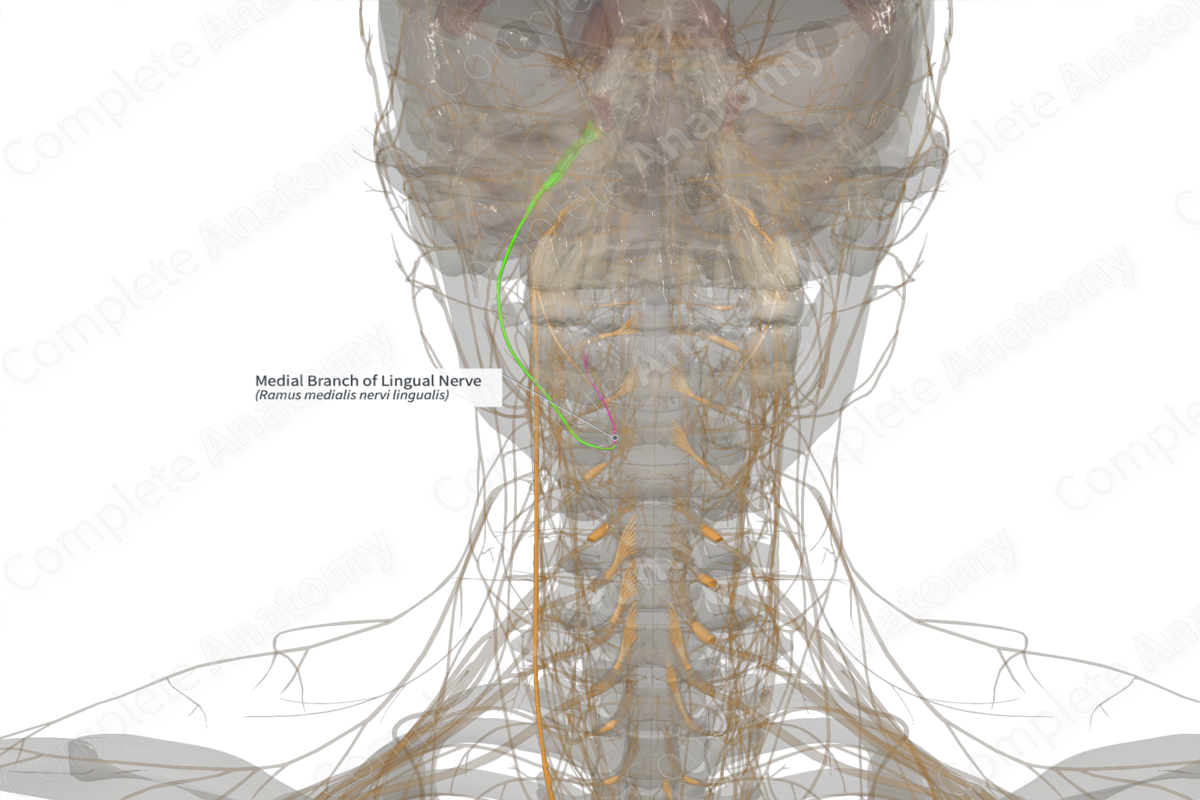
Quick Facts
Origin: Lingual nerve.
Course: Rune medially into the ventrolateral surface of the tongue, roughly opposite the first or second mandibular molar.
Branches: None.
Supply: Conveys both general sense fibers from the mucosa of the tongue back to the trigeminal nerve, and special sense taste fibers from papillae back to the chorda tympani.
Related parts of the anatomy
Origin
The medial branch of the lingual nerve is a terminal branch of the lingual nerve that runs more medially into the ventrolateral surface of the tongue.
Its fibers originate in cell bodies in the trigeminal ganglion or the geniculate ganglion, for general sense and special sense fibers respectively.
Course
The medial branch of the lingual nerve runs medially from into the ventrolateral surface of the tongue, roughly opposite the first or second mandibular molar. These fibers innervate tissue in this region of the tongue.
Branches
There are no named branches.
Supplied Structures
The medial branch of the lingual nerve is a sensory nerve. It conveys general sense fibers from the mucosa of the middle anterior two third of the tongue back to the trigeminal nerve.
They also convey special sense taste fibers from taste receptors of the same area back, via the lingual nerve and chorda tympani, to the facial nerve (Zur et al, 2004).
References
Zur, K. B., Mu, L. & Sanders, I. (2004) Distribution pattern of the human lingual nerve. Clin Anat, 17(2), 88-92.
Learn more about this topic from other Elsevier products


